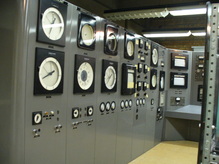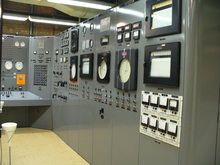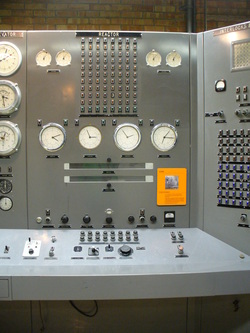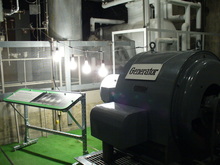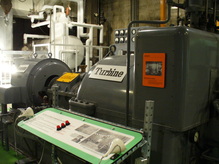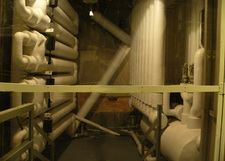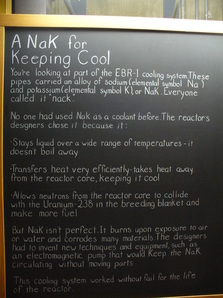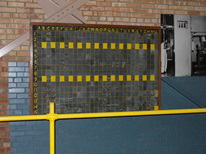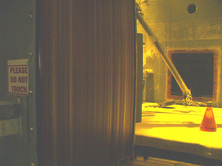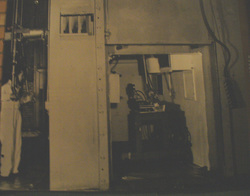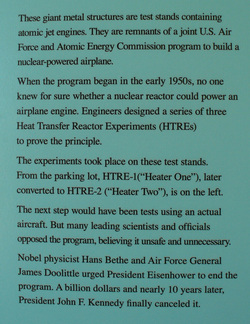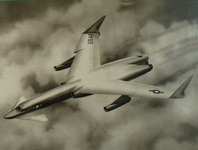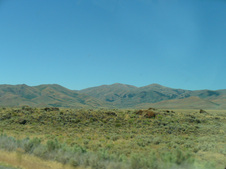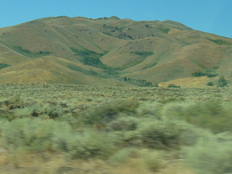Experimental Breeder Reactor 1 (EBR-1)
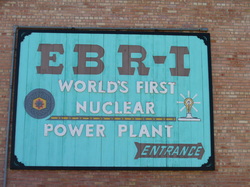
Our next stop was unplanned, but very interesting! EBR-1 was the world's first nuclear power plant. There were many interesting things to see with lots of technical explanations . . . way too much to include here, but I have posted some of the most interesting and easiest to explain to give you an idea of what it was like to visit inside a nuclear power plant.
This is EBR-1 today. The nuclear fuel has been removed although small amounts of radiation still remain in some of the pipes and things. It is safe to enter the structure and it is open for public tours. Here is the brief history of EBR-1:
1951 - this is the first nuclear reactor in the world to produce usable
electricity on December 20, 1951
1953 - this is where scientists and engineers first prove that a nuclear
reactor can create more fuel than it uses
1964 - the reactor is decomissioned after a decade of being used by
both men and women to provide contributions to nuclear science
and engineering
1966 - EBR-1 is designated a National Historic Landmark by President
Lyndon B. Johnson
1975 - EBR-1 is opened to the public
1951 - this is the first nuclear reactor in the world to produce usable
electricity on December 20, 1951
1953 - this is where scientists and engineers first prove that a nuclear
reactor can create more fuel than it uses
1964 - the reactor is decomissioned after a decade of being used by
both men and women to provide contributions to nuclear science
and engineering
1966 - EBR-1 is designated a National Historic Landmark by President
Lyndon B. Johnson
1975 - EBR-1 is opened to the public
On November 29, 1955 while conducting an experiment on the reactor, an unexpected partial meltdown occurred in the reactore core. No personnel were injured or exposed to radiation. The accident was, in fact, helpful in the later safe design of fast reactors. A new core was installed in 1957.
Below is the turbine that was turned by steam created by the reactor's heat. The turbine turned the generator which produced the electricity to power the light bulbs. The experiment is displayed here just as it was on that historic day.
Next we saw the cooling system for the reactor. It will be easier for you to click on the picture on the right to read about how it worked rather than for me to try to explain it.
After viewing the cooling system, we visited the "rod farm." The big cask pictured below was used to remove the used rods from the core. The rods were then washed in a special tank and then stored individually in numbered holes called the "rod farm." A chalkboard was used to keep track of the inventory of used rods.
The Rod Farm
These next pictures show the hot cell which was used to inspect and repair radioactive materials. The concrete walls of the cell are 39 inches (3 feet, 3 inches) thick in order to provide protection from radiation. An operator stood in front of a 34 layer window, also 39 inches thick, and used specially designed mechanical arms to manipulate the "hands" inside the chamber.
A scientist uses the arms to manipulate the hands inside the hot cell.
Experimental Breeder Reactor 1


